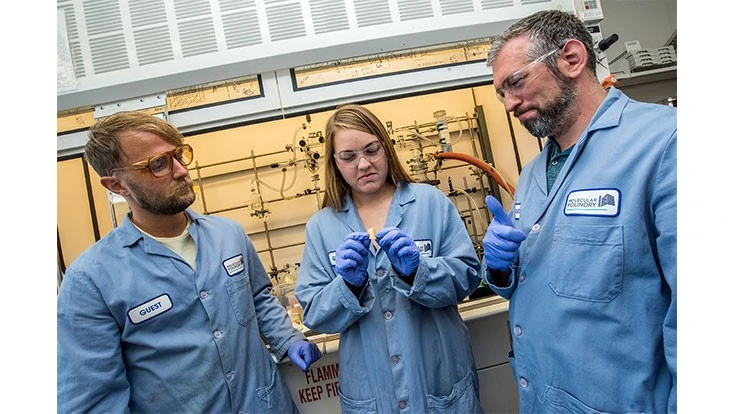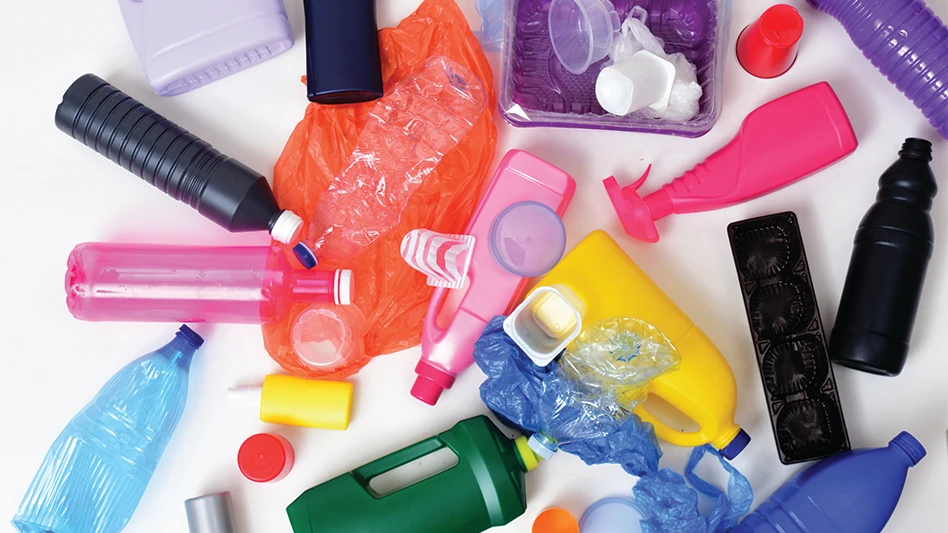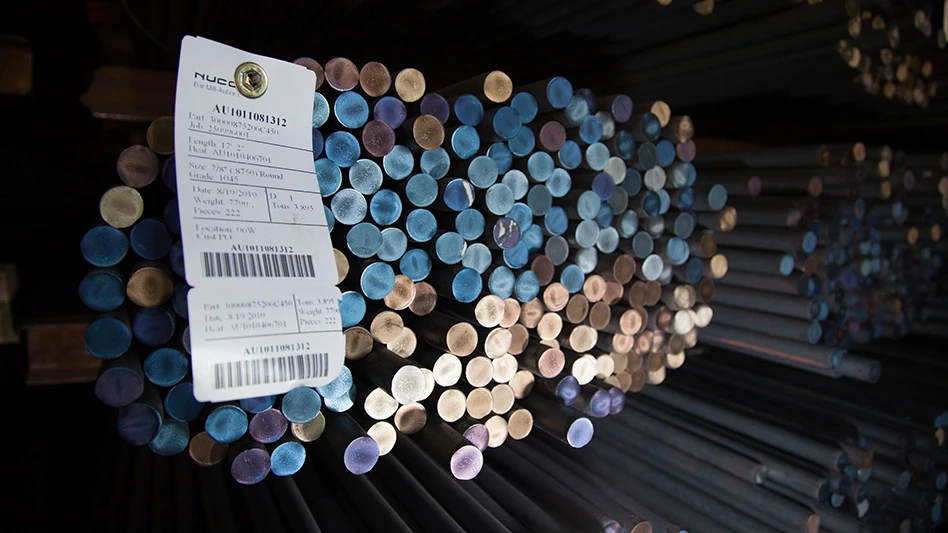
Photo courtesy of Marilyn Chung/Berkeley Lab
Very few plastics can be recycled without a loss in performance or aesthetics because of the various additives, like dyes, fillers or flame retardants, in them. However, a team of researchers at the U.S. Department of Energy’s (DOE) Lawrence Berkeley National Laboratory, Berkeley, California, has designed a recyclable plastic that can be disassembled into its constituent parts at the molecular level, and then reassembled into a different shape, texture and color repeatedly without the loss of performance or quality. The new material is called poly(diketoenamine) (PDK).
“Most plastics were never made to be recycled,” says lead author Peter Christensen, a postdoctoral researcher at Berkeley Lab’s Molecular Foundry. “But we have discovered a new way to assemble plastics that takes recycling into consideration from a molecular perspective.”
According to a news release from the Berkeley Lab, Christensen was part of a multidisciplinary team led by Brett Helms, a staff scientist in Berkeley Lab’s Molecular Foundry. The other co-authors include Angelique Scheuermann (then of University of California, Berkeley) and Kathryn Loeffler (then of the University of Texas at Austin), who were undergraduate researchers at the time of the study.
“Circular plastics and plastics upcycling are grand challenges,” Helms says. “We’ve already seen the impact of plastic waste leaking into our aquatic ecosystems, and this trend is likely to be exacerbated by the increasing amounts of plastics being manufactured and the downstream pressure it places on our municipal recycling infrastructure.”
The researchers want to divert plastics from landfills and the oceans by incentivizing the recovery and reuse of plastics, which could be possible with polymers formed from PDKs, according to the Berkeley Lab news release. “With PDKs, the immutable bonds of conventional plastics are replaced with reversible bonds that allow the plastic to be recycled more effectively,” Helms says.
Discovery of PDKs
The Berkeley Lab reports that unlike conventional plastics, the monomers of PDK plastic could be recovered and freed from any compounded additives simply by dunking the material in a highly acidic solution. The acid helps to break the bonds between the monomers and separate them from the chemical additives that give plastic its look and feel.
“We’re interested in the chemistry that redirects plastic life cycles from linear to circular,” Helms adds. “We see an opportunity to make a difference for where there are no recycling options.” That includes adhesives, phone cases, watch bands, shoes, computer cables and hard thermosets that are created by molding hot plastic material.
The researchers first discovered the exciting circular property of PDK-based plastics when Christensen was applying various acids to glassware used to make PDK adhesives and noticed that the adhesive’s composition had changed. Curious as to how the adhesive might have been transformed, Christensen analyzed the sample’s molecular structure with an NMR (nuclear magnetic resonance) spectroscopy instrument. “To our surprise, they were the original monomers,” Helms says.
After testing various formulations at the Molecular Foundry, they demonstrated that not only does acid break down PDK polymers into monomers, but the process also allows the monomers to be separated from entwined additives.
Next, they proved that the recovered PDK monomers can be remade into polymers, and those recycled polymers can form new plastic materials without inheriting the color or other features of the original material, the Berkeley Lab reports in the news release. The researchers believe that their new recyclable plastic could be a good alternative to many nonrecyclable plastics in use today.
“We’re at a critical point where we need to think about the infrastructure needed to modernize recycling facilities for future waste sorting and processing,” Helms says. “If these facilities were designed to recycle or upcycle PDK and related plastics, then we would be able to more effectively divert plastic from landfills and the oceans. This is an exciting time to start thinking about how to design both materials and recycling facilities to enable circular plastics.”
According to the news release from the Berkeley Labs, the researchers’ next plan to develop PDK plastics with a wide range of thermal and mechanical properties for applications as diverse as textiles, 3D printing and foams. In addition, they are looking to expand the formulations by incorporating plant-based materials and other sustainable sources.
Latest from Recycling Today
- Indiana county awarded $65K recycling grant
- Mixed paper, OCC prices end year on downward trend
- Updated: CAA submits final draft program plan in Oregon
- Enviri names new president of Harsco Environmental business
- Survey outlines ‘monumental challenge’ of plastic packaging collection in UK
- Nippon Steel acknowledges delay in US Steel acquisition attempt
- BASF collaborates to study mechanical plastic recycling
- Commentary: navigating shipping regulations for end-of-life and damaged batteries





